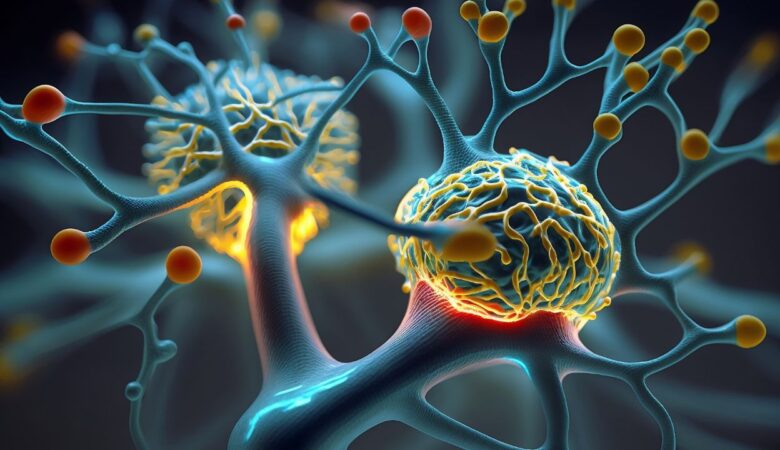Why Questions in Speech Therapy: A Comprehensive Guide
Introduction to the Importance of Why Questions Unlock the power of why! In the world of speech therapy, asking “why” questions is a vital skill that can open doors to improved communication and understanding. Whether you’re a parent seeking ways to enhance your child’s language development or a speech therapist looking for effective strategies, this comprehensive guide will shed light on the importance of why questions in speech therapy. Get ready to dive into different types of why questions, discover practical teaching techniques, overcome common challenges, explore real-life applications, involve parents in practice sessions, and find answers to frequently asked questions. So let’s embark on this journey together as we unravel the mysteries behind why questions in speech therapy! Also read: Why do I feel chest pain after drinking? Different Types of Why Questions in Speech Therapy In speech therapy, why questions play a crucial role in developing language skills and cognitive abilities. They help children understand cause-and-effect relationships, make connections between events or actions, and express their thoughts effectively. Here are some different types of why questions commonly used in speech therapy: Causal Why Questions: These questions focus on understanding the cause behind an event or action. For example, “Why is it raining?” or “Why did the ball fall?” Predictive Why Questions: These questions encourage children to think about what might happen next based on given information. For instance, “Why do you think she will be happy?” or “Why do you think he will choose the blue car?” Evaluative Why Questions: These questions require critical thinking and reasoning skills as they involve making judgments or expressing opinions. Examples include, “Why do you think that movie was good?” or “Why should we recycle?” Problem-Solving Why Questions: These questions stimulate problem-solving abilities by asking how to fix a situation or overcome a challenge. For instance, “Why can’t the computer turn on? What could be wrong with it?” Inferential Why Questions: These questions promote inferencing skills by encouraging children to draw conclusions based on given information and context clues. Examples include, “Why do you think she looks sad?” or “Why does he need an umbrella?” By incorporating these various types of why questions into speech therapy sessions, therapists can enhance linguistic comprehension, critical thinking skills and overall communication abilities in children. Remember that every child progresses at their own pace and may find certain types of why questions more challenging than others. Strategies for Teaching Why Questions Teaching why questions is an essential part of speech therapy, as it helps individuals develop their reasoning and critical thinking skills. Here are some effective strategies to help facilitate the learning of why questions: Start with concrete examples: Begin by using real-life objects or situations that the individual is familiar with. For example, you can ask why we wear a coat in cold weather or why we use an umbrella when it’s raining. This will make it easier for them to understand and answer why questions. Use visual aids: Visuals can be powerful tools in teaching why questions, especially for individuals who are visual learners or have difficulty processing auditory information. You can create picture cards or use illustrations to support your questioning. Provide multiple-choice options: Sometimes, providing choices can make answering why questions less overwhelming for individuals who struggle with open-ended prompts. Presenting options allows them to focus on selecting the most appropriate response rather than generating an answer from scratch. Break down complex sentences: If a child finds it challenging to comprehend longer sentences, simplify them into shorter phrases or use simpler vocabulary while maintaining the meaning intact. Practice through role-playing and discussions: Engage in interactive activities where individuals have opportunities to participate in conversations and practice answering why questions within various contexts. Remember that each person learns differently, so adapt these strategies based on individual needs and preferences during speech therapy sessions! Common Challenges and Solutions One of the common challenges when teaching why questions in speech therapy is difficulty understanding the concept itself. Some children may struggle to grasp the idea of cause and effect, making it challenging for them to answer why questions. In such cases, it is important to break down the concept into simpler terms and provide concrete examples. Another challenge can be limited vocabulary or language skills. Children with language delays may have a hard time expressing their thoughts or understanding complex sentences. To address this, therapists can use visual aids, gestures, or simplified language to help children comprehend and respond to why questions. In some instances, children may give inappropriate or unrelated answers when asked why questions. This could be due to difficulties with attention or impulsivity issues. Implementing strategies like visual cues, structured routines, and repetition can help improve focus and reduce impulsive responses. Additionally, generalization of skills can pose a challenge. Children might struggle with applying their knowledge of answering why questions in different contexts. Therapists can work on generalizing these skills by practicing in various settings and incorporating real-life scenarios. It’s also important to consider individual learning styles when addressing challenges during speech therapy sessions. Some children may benefit from hands-on activities while others prefer visual prompts or auditory cues. Personalizing interventions based on each child’s strengths will contribute to better outcomes. Real-life Applications of Why Questions Why questions are not only important in speech therapy sessions but also have real-life applications that can help individuals improve their communication skills in everyday situations. By understanding the reasons and motivations behind certain actions or events, individuals can better navigate social interactions and make informed decisions. In social settings, asking why questions allows individuals to engage in meaningful conversations and gain a deeper understanding of others’ perspectives. For example, when meeting someone new, asking why they chose their profession or hobby can lead to interesting discussions and foster connections. Why questions also play a crucial role in problem-solving. When faced with challenges at work or home, asking why something happened or why a particular solution is being proposed helps identify underlying causes and evaluate










